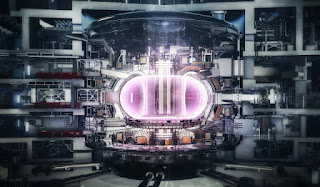Scientists in Germany have made significant progress in addressing a major heat-loss challenge in a cutting-edge nuclear fusion reactor called a "stellarator." This brings us closer to a future where near-limitless clean energy is a reality.
Nuclear Fusion: The Future of Clean Energy
Nuclear fusion, the process of merging two atomic nuclei to form a single nucleus, releases a massive amount of energy, enough to power the sun and other stars. Harnessing nuclear fusion on Earth would revolutionize our fight against climate change.
Fusion energy doesn't produce carbon emissions or long-lasting radioactive waste, unlike burning fossil fuels or nuclear fission. Moreover, it isn't weather-dependent like solar and wind energy.
Creating the Perfect Nuclear Fusion Reactor
Achieving nuclear fusion requires extreme heat and pressure, as once stated by Nobel-winning physicist Pierre-Gilles de Gennes, it's like putting the "sun in a box." Researchers have developed various nuclear fusion reactors, or "boxes," but they consume more energy than they generate, making fusion energy unfeasible.
Stellarators: A Promising Fusion Reactor Design
A stellarator is a unique nuclear fusion reactor resembling a distorted, massive donut, encircled by a coil of magnets that generate magnetic fields to control plasma flow. Stellarators force atoms within the plasma to undergo fusion under extreme heat and pressure. This design offers greater power efficiency and flexibility compared to other fusion reactors.
However, stellarators are prone to heat loss through a process called "neoclassical transport," which prevents sustained fusion.
Groundbreaking Progress in Stellarator Design
Researchers have now minimized heat loss in the world's most advanced stellarator, Wendelstein 7-X, by optimizing its magnetic coil. This modification enabled them to heat the reactor's interior to nearly 54 million degrees Fahrenheit, over twice the temperature of the sun's core. Tests confirmed that the design specifically reduced heat loss due to neoclassical transport.
Physicist Novimir Pablant said, "It's really exciting news for fusion that this design has been successful. It clearly shows that this kind of optimization can be done." This breakthrough brings stellarators one step closer to becoming a viable design for nuclear fusion reactors.


Post a Comment